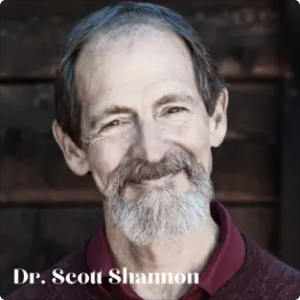Wholeness Center in Fort Collins, Colorado has been a trusted site for psychedelic care for many years. Our providers participate in clinical trials for MDMA, ketamine, cannabidiol, 5-MEO-DMT, and LSD. We have delivered over 7,000 ketamine sessions in our history. Now that psilocybin is legal in Colorado, we also provide harm reduction sessions for this medicine. We believe that integrating psychedelics with other natural treatment options provides the optimal support needed for healing. We have well-trained and experienced psychedelic practitioners. Wholeness continues to lead this emerging field. Our psychedelic- assisted therapy differs from other clinics in that our model is comprehensive including some aftercare.
- 970-221-1106
- info@wholeness.com
- 2620 East Prospect Road, Suite #190, Fort Collins, CO
Psychedelic Therapy

Psychedelic Therapy

Psychedelic therapy utilizes psychedelic substances, such as ketamine and psilocybin, along with traditional psychotherapy to facilitate and even accelerate the psychological healing process, especially in the case of treatment-resistant depression and other chronic clinical disorders. Think of these tools as catalysts for deeper change and transformation.
Find out more about Ketamine-Assisted Therapy and Psilocybin-Assisted Therapy that applies a harm reduction approach.
Frequently Asked Questions about Psychedelic Therapy
What are psychedelic substances?
The term “psychedelic” refers to substances that can induce profound alterations in consciousness.
What are the effects of psychedelics?
Psychedelics can alter a person’s perception of reality. This includes changes in how one views their internal and external worlds. For example, time may appear to slow down or speed up, visual input can appear intensified and distorted, and sensory modalities can even mix with one another, such as seeing sounds and tasting colors. Psychedelics also impact mood and thoughts, leading to profound realizations about life or self.
What is Psychedelic Assisted Therapy and is it legal in Colorado?
Psychedelic-assisted therapy involves using psychedelic substances (such as psilocybin, MDMA, or ketamine) in conjunction with therapeutic support to facilitate healing and personal growth. Sessions occur in a controlled environment with a trained therapist. The therapist provides emotional support, helps navigate the experience, and facilitates introspection.
While formal licensed therapy with psychedelics is not yet legal in Colorado, alternative approaches exist. Some centers (such as Wholeness Center) offer guided experiences with natural psychedelics under skilled supervision.
What are the therapeutic effects of psychedelic-assisted therapy?
Psychedelic-assisted therapy holds promise for various mental health conditions. Research suggests that psychedelic-assisted therapy may be effective for depression, PTSD, anxiety, OCD, and addiction treatment. These mental illnesses can be thought of as stuck, rigid patterns in the ways our brains work and therefore, how we interact with the world. Unfortunately, these rigid patterns can limit the effectiveness of traditional psychotherapy in that they limit our ability to develop insights and make effective changes in our lives. The addition of psychedelics to therapy can help facilitate the transformations needing to take place in therapy and therefore, increases the chances that an individual can participate in their life in a meaningful
way.
For treatment-resistant depression, they may enhance mood, increase self-awareness, and provide insights into underlying issues contributing to depression.
For individuals with life-threatening illnesses (e.g. cancer), they can spur a shift in perspective, acceptance, and decreased fear of death.
Psychedelics may address addiction by resetting emotional and reward processing in the brain.
Psychedelics can decrease fear-based reactions and enhance feelings of interconnectedness, thereby facilitating trauma processing.
How does psychedelic-assisted therapy differ from treatment as usual?
Current accepted mental healthcare practices typically involve treatment with a combination of medication and psychotherapy. However, psychedelic-assisted therapy differs from traditional practices in that:
- The psychedelic is only ingested on the day of the session. This is unlike traditional methods where the afflicted person typically takes medicine every day.
- Traditional medicines tend to blunt emotional processes that are causing interference in a person’s life, whereas psychedelics tend to enhance these processes. Both approaches have their place in treating mental illness. However, psychedelic-assisted therapy should only be considered if the individual is feeling ready to approach potentially challenging psychological content.
- Unlike traditional medicines, whose effects are mostly born out of a passive process, the subjective effects of psychedelics are dependent on the interaction of one’s mindset and the setting in which they are ingested. This is why we recommend the use of these substances in a safe setting with a responsible guide.
- Finally, psychedelics are known to promote “mystical experiences.” These experiences involve the connection to something greater than ourselves and may lead to spiritual transformation.
What happens before beginning psychedelic therapy?
Before beginning psychedelic therapy, it’s important to develop an understanding of the logistics of the guided session and the potential effects of the psychedelic, hone your intention(s) for your guided work, and build a trusting relationship with the. This is a time for you and your therapist to lay out the map of your internal landscape so that they can best guide you while you are under the effects of the psychedelic and in an altered state. There is flexibility in the timeline and pace of the therapy, allowing the individual to progress at their own comfort level.
Furthermore, your therapist may teach you tools to help you navigate the terrain of your internal world, such as reconnecting with the body, tracking sensations and emotions, and various emotional regulation techniques. Other topics covered include the use of therapeutic touch, music, and ceremony to help facilitate the psychedelic-assisted therapy session.
What is the actual process of psychedelic-assisted therapy like?
Under the supervision of a trained therapist, you ingest the psychedelic substance. The therapist ensures safety and provides emotional support during the session.
The effects experienced depend on the specific psychedelic substance ingested as well as the unique factors of the individual. Think of it like a dance between you and the psychedelic. Typically, the sessions consist of alternating periods of internal focus, aided by using an eye mask and headphones, and external processing with the therapist. Participants often report profound insights, spiritual experiences, and increased self-awareness. The therapist serves as a guide, helping you navigate the experience.
After the psychedelic session, you have several medicine-free integration sessions. These sessions allow you to explore and integrate the insights gained during the experience. You discuss emotions, memories, and shifts in perspective. Integration is crucial for lasting change and personal growth.
Psychedelic-assisted therapy creates long-lasting effects after a relatively short course of treatment. Improvement often continues well beyond the active treatment phase. The combination of substance-induced insights and psychotherapy contributes to lasting transformation.
For Further Reading

MDMA-assisted therapy for severe PTSD: a randomized, double-blind, placebo-controlled phase 3 study– by Scott Shannon MD (and others)

The Case for Using MDMA to Help Heal Victims of Trauma– by Scott Shannon MD

What is the psychedelic paradigm? A conversation with Dr. Scott Shannon
Testimonial
“I was suicidal and incapacitated for about a year and a half. I tried every psychological and psychiatric treatment. Psilocybin was my first real, big, significant breakthrough. Nothing came even remotely close to this. It, profoundly, changed my life, like nothing I have ever experienced. It was literally like some three years of therapy for me, condensed into a single session. My psilocybin experience was, also, maybe the most meaningful moment of my life. I wish the whole world could experience the healing and enlightenment that psilocybin gave me.” Bernardo G
